Anycubic celebrated its fifth anniversary in September with a bang, unveiling a handful of resin 3D printers with the pomp of a grand ceremony held within an ornate show hall. The presenters have long since left the stage, but the afterparty continues with three Photon Mono 3D printers that are, for the most part, now available.
We’ve got our hands on the Photon Mono, the cheapest – at the time of writing Anycubic sells the printer for $249 – and most feature-spare of the lot. Its headline feature is a 2K monochromatic LCD – basically, it can print fast.
But how fast is fast? And is it worth it when the also-anniversary-announced Photon Mono X has a much larger build volume, the Photon Mono SE is a generally more premium printer, and other manufacturers tout their mono-LCD printers for the same price, if not less? Let’s find out.
Hands On

The Photon Mono marks new territory for Anycubic, as one of its initial wave of mono LCD-toting MSLA printers. This LCD tech, which serves as the mask for each layer, sitting between the printer’s UV light source and the wafer-thin layer of resin in the vat, is much more efficient for the process than RGB LCD counterparts. As such, the UV light doesn’t need to be on for long at all, shortening overall layer cure times, and consequently, print time overall.
It’s a bold new world, and most MSLA printers worth looking at these days use this tech. So how does the Photon Mono hold up?
Function
The Photon Mono’s main feature is its monochrome LCD, which, as described above, supercharges its print speed. Standard resins can be processed with cure times as low as ~2 seconds.
As now seems to be the case with all of Anycubic’s resin printers, the company ships the printer with a resin cure time test print, which helps you to hone in on the optimal cure time, giving sharp detail for any resin. Every resin printer should ship with such a test, yet most don’t, so credit to Anycubic.
The Photon Mono throws no curve balls when setting up and using the printer. Releasing it from its tidy foam-wedged bonds leaves you with the printer, power cord (standard laptop-brick style 12v), and Anycubic’s typically generous box of resin handling accessories.
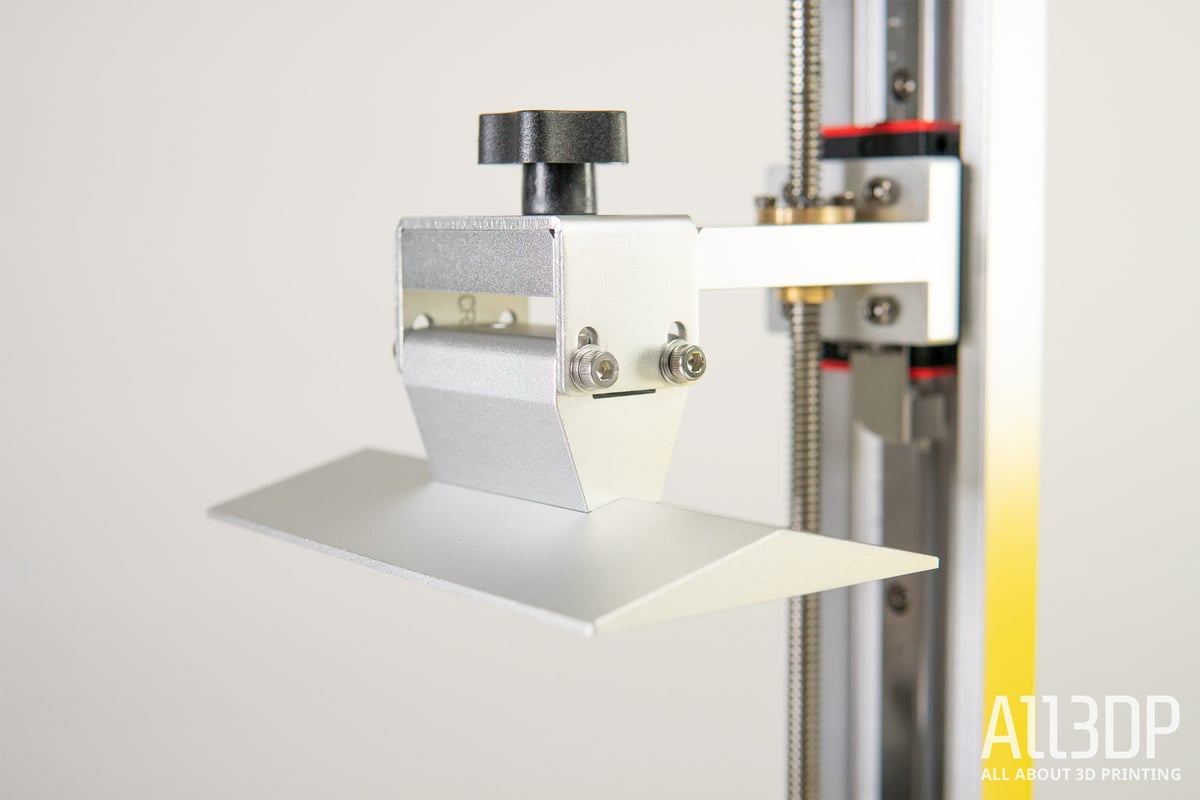
Build plate leveling requires you to remove the resin vat before loosening the four bolts fixing it in place, and lowering it to a sheet of paper covering the LCD. Putting pressure on the plate to ensure its levelness: tighten the bolts, and you’re good to go. Standard MSLA-printer-setup fare.
In practice, Anycubic’s Photon Mono performs to the same decent standard established by the company’s Photon printer back in 2018, but with hardware upgrades beyond simply a monochrome LCD that iron out the kinks and a design change that makes it much more pleasant to use.
The Z-axis motion system sees a jump to a linear rail rather than rods, which in theory should make the printer sturdier and precision through the Z-axis more repeatable. In practice, we see this. Paired with dialed in default lift settings, the result is exceptionally clean prints with little to no noticeable banding or artifacts in the Z.
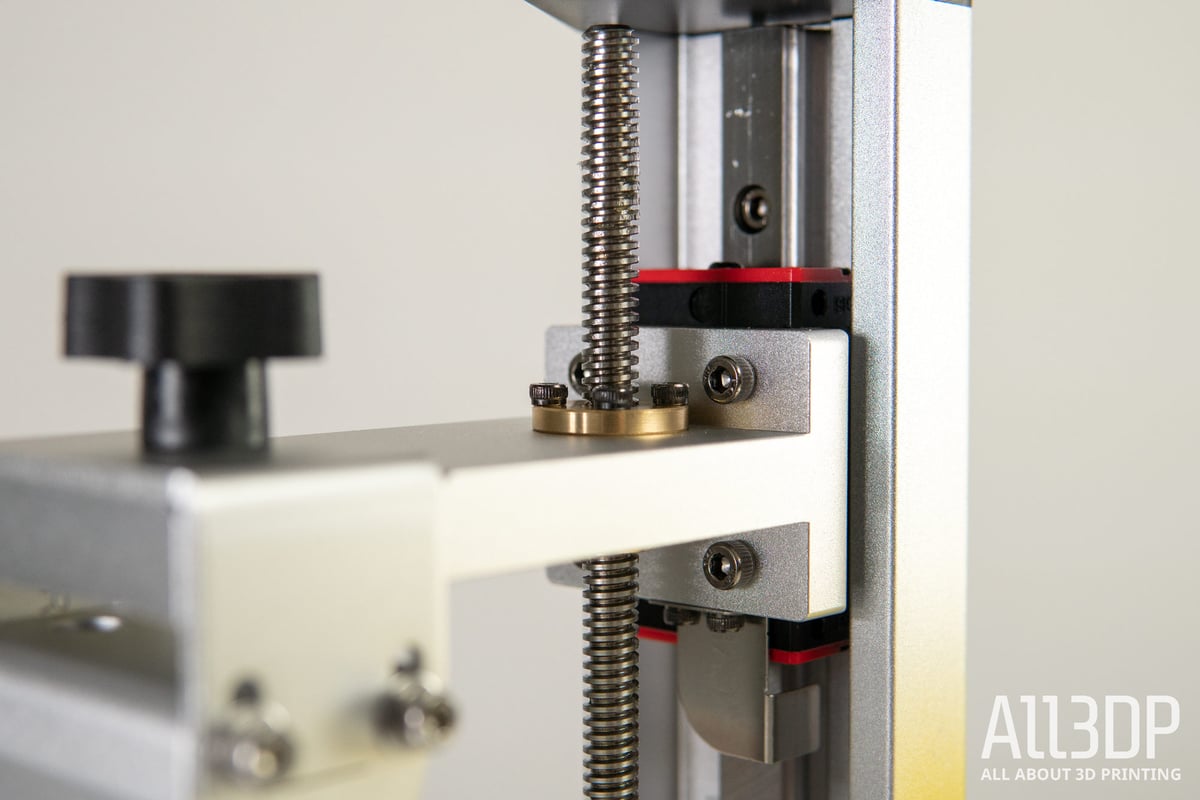
Print quality using stock profiles and unchallenging resin is, predictably, great. Actually, we’ve managed to render some incredible prints on the Mono with little to no effort on our part. There’s the feeling that the Mono is forgiving, in the way that we liked about the Elegoo Mars, and original Phrozen Sonic Mini.
It seems that decent factory default lift settings come in clutch here. The Mono is no slouch, but it also doesn’t aggressively rip the plate up when changing layer.
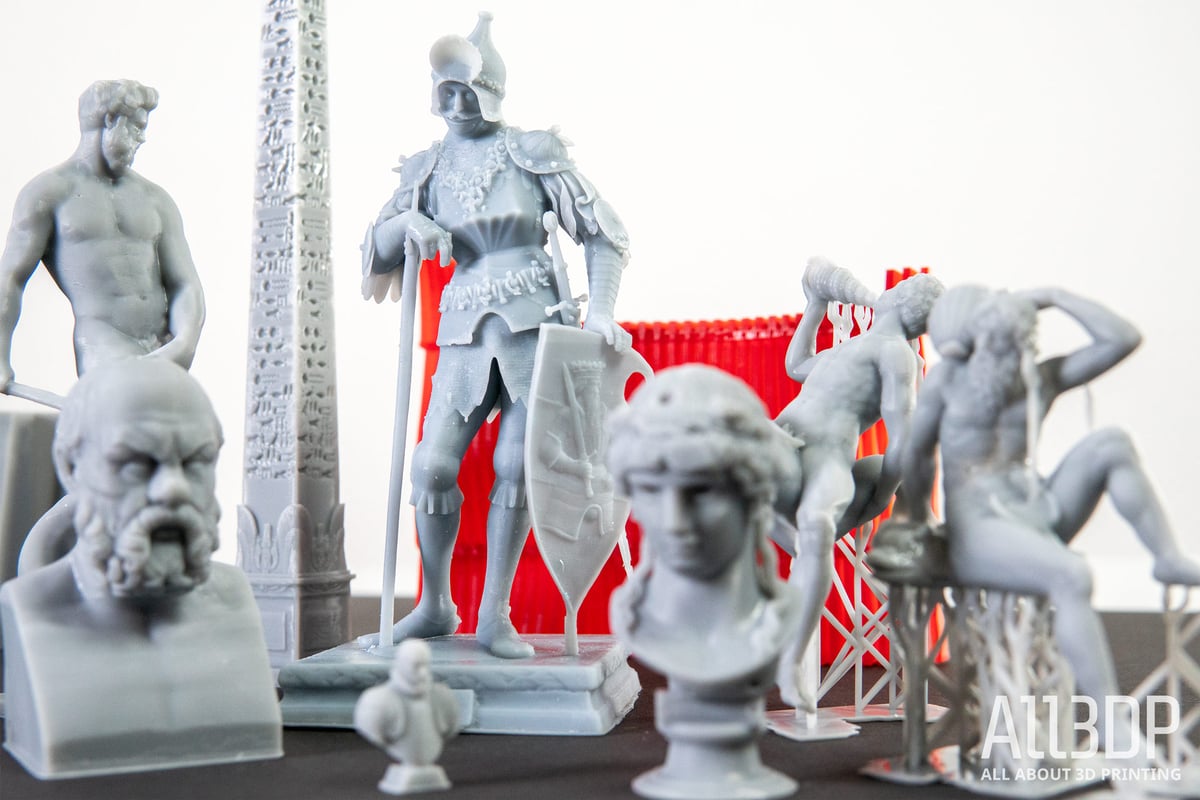
Form
Let’s preface this by saying that the Anycubic Photon Mono is a tidy little printer. Its plastic shell sits flush to the desk, and the UV blocking lid hoists up and off for unfettered access to the vat and build plate, something we find way more user friendly on printers this size and a change on the likes of the original Photon and Photon S (and newer Photon Mono SE) which all use an upswinging hinged door.
The decorative ridging around the base of the printer looks neat but is begging for a stray drip of resin to ruin its clean lines and would be irritatingly difficult to clean.
As with all previous Photon printers, the USB port is located on the side, near the rear of the printer, which means you need plenty of free space to its right to be able to use it. We chastised the Elegoo Mars for this back in 2019, and, similarly, pooh-pooh it here. The Photon Mono SE also suffers from this.
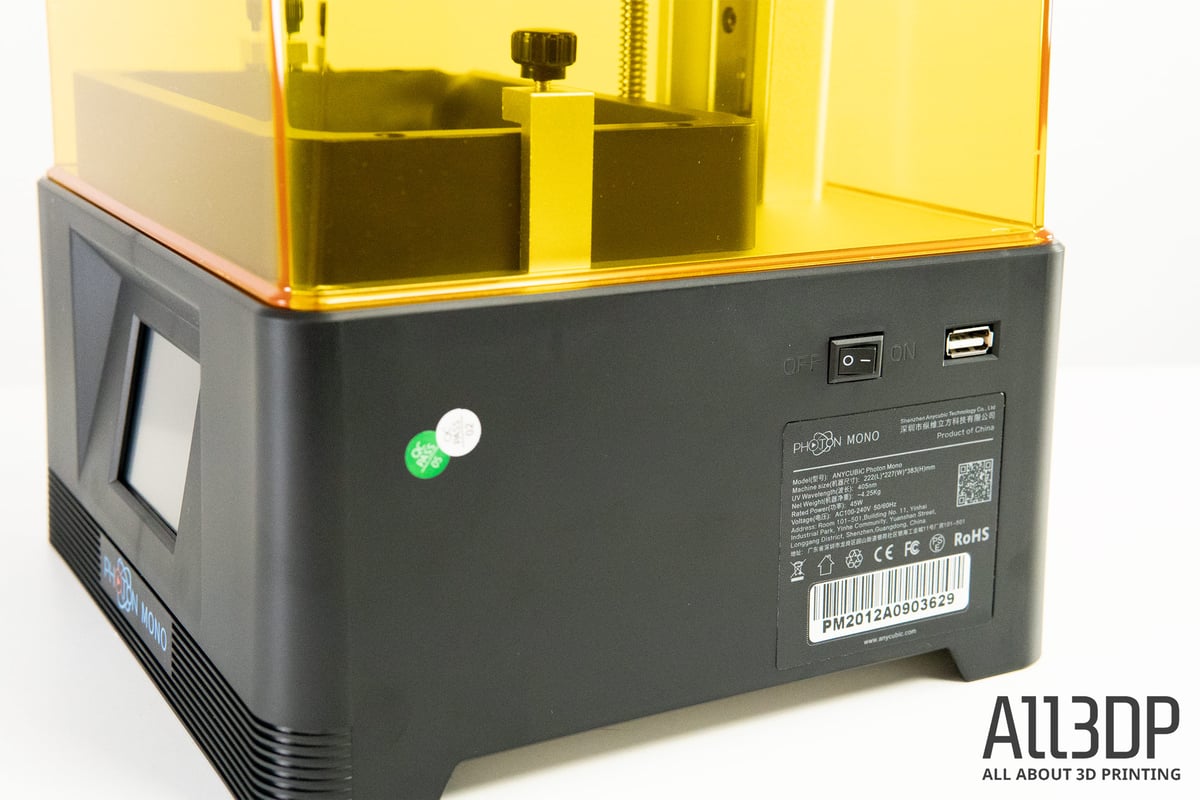
New for the Photon Mono is an entirely plastic resin vat, something many would consider a downgrade. They’re often the focal point of criticism against machines that use them, with durability against the concoction of chemicals at play an underlying theme. In the scheme of things, metal trumps out plastic in the made-up-but-effective-for-the-point-we’re-making index of materials and how they feel in relation to the perception of quality, and this carries to the Photon Mono, too, despite it actually being quite fine to use.
In practice, as with the Phrozen Sonic Mini when it shipped with a plastic vat (it doesn’t anymore), it is functional and, after some 100 hours of printing, not caused us any issues. Owners of the printer will far exceed our limited testing, so we can only offer this small indication that, short term, it’s fine.
One thing we’re not so hot on is that the FEP film comes pre-sandwiched in a non-separable tensioning plate. If you need to swap out your FEP on the Mono, you will have to buy special pre-framed FEP from Anycubic – not a sheet of your choosing. We’ve been told that this is to cut down on the amount of effort required to exchange the FEP film. Honestly we don’t see it being worth not being able to use your own sheets, not least for when, further down the road, Anycubic stops producing its framed versions.
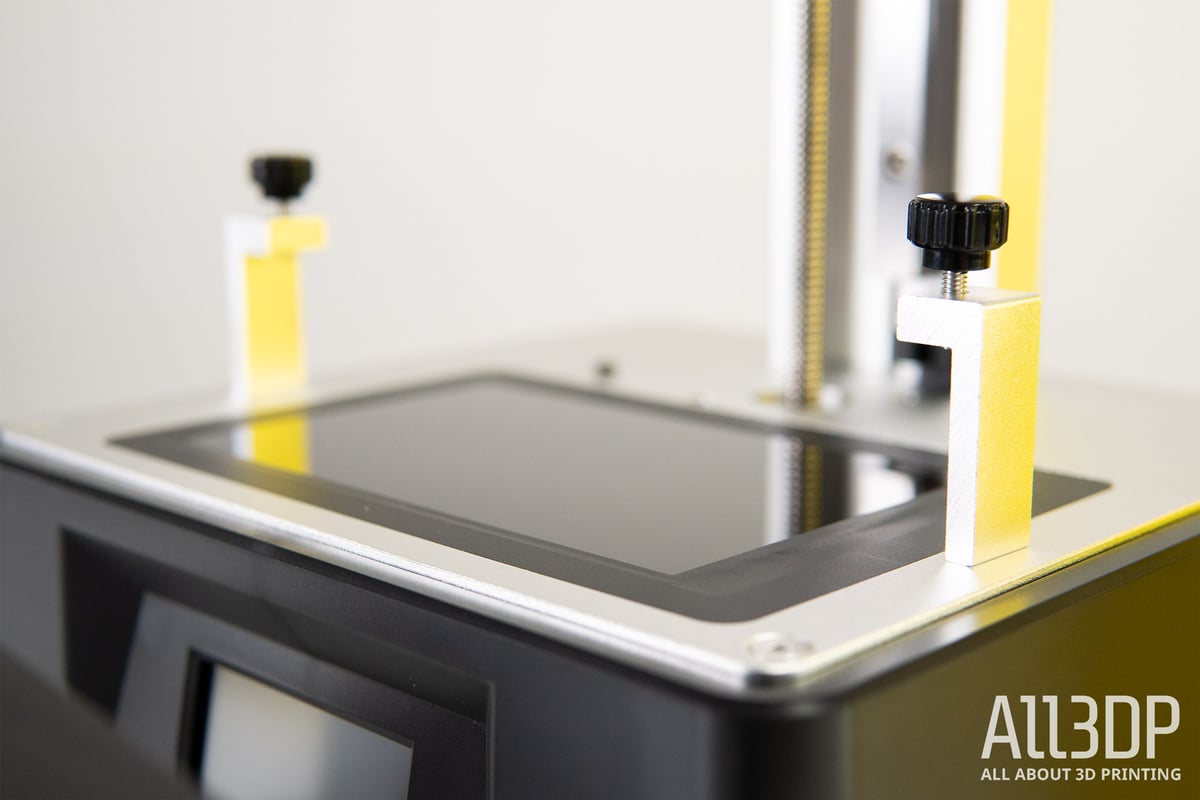
So, despite cheaping out on the resin vat, Anycubic has made sure to address another common point of contention with the more budgety of budget resin printers – print plate runoff. Anycubic’s Photon Zero printer, a ~$139 experiment in driving prices way, way down, features a flat-top print plate that resin would pool on after a print has completed. Phrozen’s Sonic Mini, another budget effort, also has this flat-top style of plate. Not so with the Photon Mono though, which features an angled print plate that allows for post-print resin runoff. Nice.
Print preparation for the Anycubic Mono is, at the recommendation of Anycubic, handled by its proprietary Photon Workshop software. It has a lot in common with ChiTuBox, possibly the most prevalent desktop resin print preparation software, so past users of that will have no trouble making the switch.
As a slicer, Photon Workshop is more than equipped to handle support generation, hollowing, model splitting, and other minor manipulations. For features, it’s richer than ChiTuBox, but with that said, we still find the occasional support structures to clip into models and other modes push the program to instability. We’d take fewer features that work better, and more reliably over exotic things such as a face generator – this isn’t a joke, Photon Workshop literally features a head generator (you feed it images and data points, and it will attempt to create a 3D likeness of the face you’ve given it. It’s not very good.
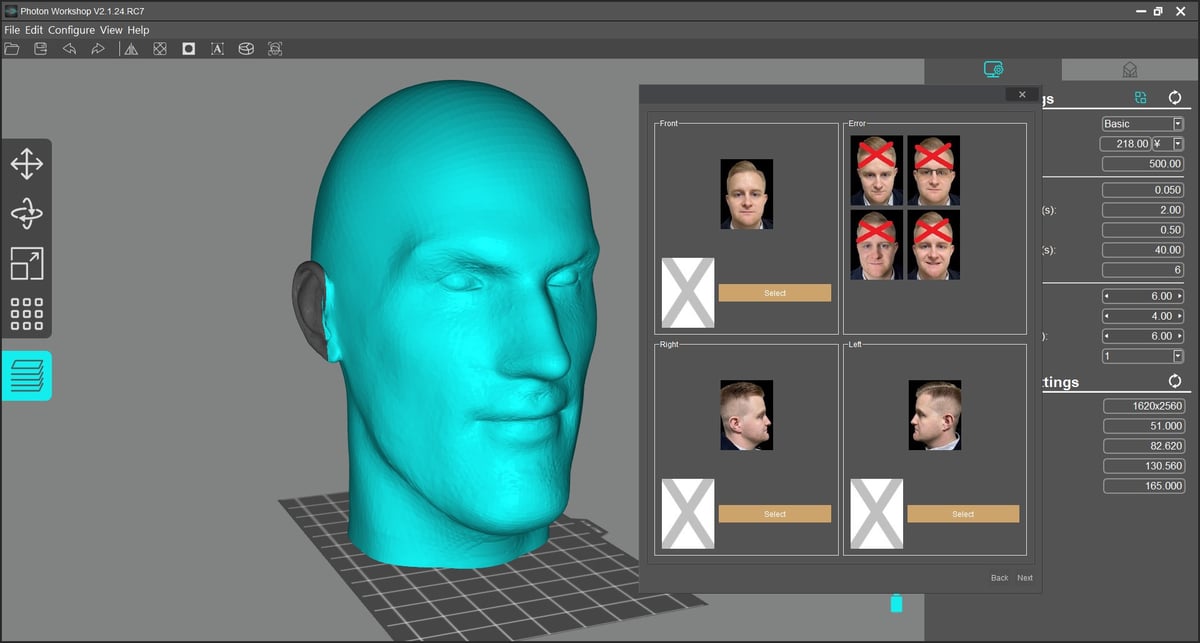
We appreciate the direction that Photon Workshop is heading in, being software covering all possible bases. Still, it’d be better off being masterful of a few functions than distinctly average (or even comically poor) at more tools than the average user will ever need.
We also found the Mono to work well with Lychee (3.1.8) slicer, which is a pretty slick and intuitive alternative.
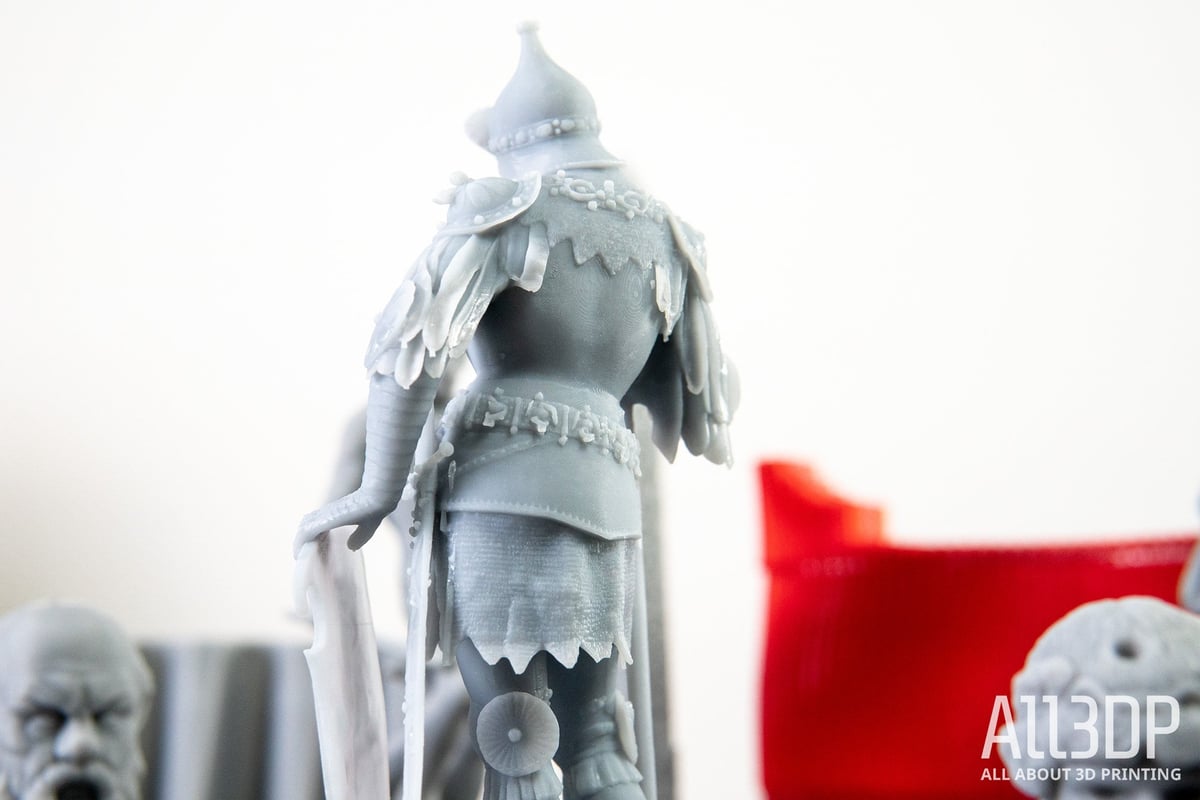
So, where does this all leave you if you’re $249 out of pocket with this ridged lump of a printer in your possession? We’d be lying if we didn’t say the Mono initially left us cold. Monochrome LCD-enabled print speeds are practically par for the course now, which leaves very little else about the Mono to write home about. It felt a bit “meh” – especially given that the price butts up on the Mars 2 Pro (similar machine, more premium). Having used the Mono for some time now, we trust it more with tricky detail and fragile features. Its stock setup is forgiving. We didn’t encounter any print failures that weren’t a result of us forgetting to top the resin tank up (this despite the tank having fill level indicators… not our proudest moment.)
The Mono has its place – if anything we can say to dissuade people away from the mind-blowingly overpriced Photon S. If the character of a printer matters to you, you may enjoy the likes of the Mars or Sonic Mini series more. But at its heart, the Photon Mono is perfectly pleasant and capable, with few notable deficiencies (though time will tell on that plastic resin vat.)

Verdict

Amidst the large, 4K toting Mono X, dual-linear railed metal-everything Mono SE, Phrozen’s trailblazing budget printers, and Elegoo’s recent mono efforts, the Anycubic Photon Mono feels a little anonymous. There’s little distinguishable about it, besides quick layer cure times, which is fast becoming the norm.
That’s not to say it isn’t a good printer. It is. It prints delicate features really well, and the provided Photon Workshop software has come on some since our last underwhelming experience with it.
All in all the Mono is a decent – if a little boring – printer that can run fast; certainly not the worst hopping on point for resin printing, but the asking price would make us think twice before buying.

Features

6″ 2K Monochrome LCD
It’s the headline feature of this printer and rightfully so. Reduced cure times mean quicker prints, which means more printing. A monochrome screen also uses less energy and has a longer lifespan, so this addition is absolutely spot on. Anycubic also says that the “Matrix Parallel Light Source” provides a more consistent exposure, with the additional benefit of being a bit more efficient.
Extra Printing Space
With 165 x 80 x 130 mm to play with there’s a good amount of space to get printing. It’s not as much space as the Photon X, but it’s more than the Photon Zero (as well as many other resin printers for that matter), and it’s an impressive amount of room for this price point.
Print Speed
With a top “light on” curing time approaching 1.5 seconds per layer, the Anycubic Photon Mono is capable of an impressive turn of pace for a resin printer. It should produce some pretty good-looking prints too, thanks to the 2560 x 1620-pixel resolution, which equates to an XY-resolution of 51 microns. Not boundary-breaking, but comfortably impressive and capable of good looking prints that capture fine detail.
Anycubic Photon Workshop
Photon Workshop has a few nifty features, including being able to add text onto your print, and 8x anti-aliasing. Previous Anycubic Photon printers have been perfectly compatible with ChiTuBox slicer software, so we expect it just a matter of time before it appears there. In the meantime, you can turn to the likes of Mango and its Lychee slicer, which natively supports the Photon Mono.

Tech Specs
GENERAL SPECS
• Technology: LCD
• Year: Resin
• Assembly: Fully assembled
• Manufacturer: Anycubic
• Country: China
3D PRINTING PROPERTIES
• Build volume: 130 x 80 x 165 mm
• XY resolution: 0.051 mm (2560 x 1680 pixels)
• Z-axis positioning accuracy: 0.01 mm
• Printing speed: 50 mm/h
• Bed leveling: n/a
• Third party materials: Yes
• Materials: 405 nm UV resin
SOFTWARE REQUIREMENTS
• Recommended Slicer: Anycubic Photon Workshop
• Operating system: Windows, Mac OSX
• File types: STL
• Connectivity: USB
DIMENSIONS AND WEIGHT
• Frame dimensions: 227 x 222 x 383 mm
• Weight: 4.5 kg
• Boxed Size: n/a
• Weight (packed): n/a

Similar Machines
Anycubic Photon Mono SE
While pretty much the same printer, the Mono SE has a couple of key differences. Firstly, it features an even better LCD screen for the potential to print at an even greater speed. Secondly, it has as a handy air filtering system so that you don’t have to suffer the pungent odour of the resin as much.
Elegoo Mars 2 Pro
Perhaps closer to being a sibling to the Photon Mono than the previous similar machine, the Elegoo Mars 2 Pro is a little bit more expensive but has, for the most part, a very, very similar specification. With little to separate them, the key factor for most buyers here will almost certainly be the pricing.
Phrozen Sonic Mini
Despite having what is easily the worst name in this list, the Phrozen Sonic Mini is quite the bargain and well worthy of consideration, particularly if you don’t need as much build space. Its 1920 x 1080 resolution means the print quality isn’t quite up the standard of the other printers on this list but it’s a good price and it impressed us greatly when we reviewed it.
License: The text of "Anycubic Photon Mono Review: Hands On" by All3DP is licensed under a Creative Commons Attribution 4.0 International License.
CERTAIN CONTENT THAT APPEARS ON THIS SITE COMES FROM AMAZON. THIS CONTENT IS PROVIDED ‘AS IS’ AND IS SUBJECT TO CHANGE OR REMOVAL AT ANY TIME.




